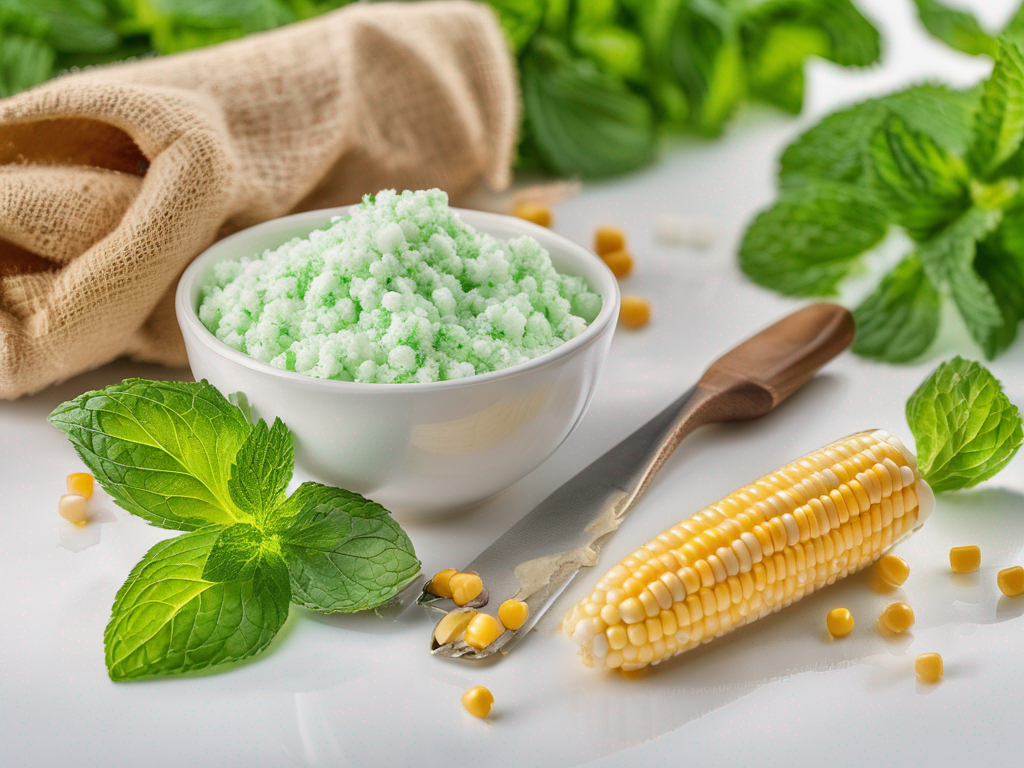
How to Store Fresh Cornmint to Keep it Crisp Longer
Get Your Free Food Safety Cheat Sheet
30 most common foods with instant answers. Print it and stick it on your fridge—completely free!
How to Store Fresh Cornmint to Keep it Crisp Longer
Fresh cornmint, also known as peppermint, is a flavorful and aromatic herb commonly used in cooking and for its medicinal properties. Whether you grow your own cornmint or purchase it from the store or farmers' market, proper storage is essential to maintain its crispness and flavor for as long as possible. In this guide, we will explore the best practices for storing fresh cornmint to help you enjoy its benefits for an extended period. (Cornmint)
Why Proper Storage is Crucial for Fresh Cornmint
Fresh cornmint, with its delicate leaves and volatile oils, is susceptible to wilting, mold growth, and loss of flavor when not stored correctly. By following proper storage techniques, you can preserve its crispness, aroma, and taste, ensuring that you get the most out of this versatile herb.
Factors Affecting Cornmint Freshness
Several factors can influence the freshness and quality of fresh cornmint, including:
-
Temperature: Cornmint is sensitive to temperature fluctuations. Exposure to high temperatures can cause wilting, while cold temperatures can lead to discoloration and loss of flavor.
-
Humidity: Cornmint prefers high humidity levels to prevent wilting. However, excessive moisture can promote mold growth, so it's essential to strike the right balance.
-
Light: Exposure to sunlight can accelerate the degradation of cornmint's essential oils and pigments, leading to flavor loss and discoloration.
-
Air Circulation: Proper air circulation is crucial to prevent moisture buildup and mold growth. However, excessive airflow can cause the leaves to dry out quickly.
Best Practices for Storing Fresh Cornmint
To prolong the freshness and crispness of fresh cornmint, follow these simple yet effective storage tips:
1. Harvesting and Cleaning
-
Harvest at the Right Time: Harvest cornmint in the morning when the essential oils are most concentrated for the best flavor.
-
Gentle Washing: Rinse the cornmint leaves under cold water to remove any dirt or debris. Pat them dry with a paper towel to prevent excess moisture.
2. Refrigeration
-
Wrap in Damp Paper Towel: Place the cornmint leaves in a damp paper towel to maintain high humidity levels without excess moisture.
-
Storage Container: Store the wrapped cornmint in a perforated plastic bag or airtight container to prevent wilting and exposure to odors from other foods.
3. Freezing
-
Blanching: To freeze cornmint for long-term storage, blanch the leaves in boiling water for a few seconds, then plunge them into ice water to preserve their color and flavor.
-
Freeze in Portions: Divide the blanched cornmint into small portions and store them in airtight containers or freezer bags. Label the containers with the date to track freshness.
4. Drying
-
Air Drying: Tie cornmint stems together and hang them upside down in a dark, well-ventilated area to air dry. Once dry, store the leaves in an airtight container away from light and heat.
-
Use a Dehydrator: Alternatively, use a food dehydrator to dry cornmint quickly and efficiently. Store the dried leaves in airtight containers in a cool, dark place.
Safety Precautions for Storing Fresh Cornmint
While storing fresh cornmint, it's essential to keep food safety in mind to prevent contamination and foodborne illnesses. Follow these safety precautions:
- Wash Hands: Always wash your hands before handling fresh cornmint to prevent the transfer of bacteria.
- Clean Storage Containers: Ensure that storage containers are clean and dry before placing cornmint inside to avoid mold growth.
- Monitor Temperature: Keep an eye on the refrigerator or freezer temperature to ensure optimal conditions for storing cornmint.
- Discard Spoiled Leaves: Check the cornmint regularly for any signs of spoilage, such as mold or slime, and discard any affected leaves immediately.
Conclusion
By following the proper storage techniques outlined in this guide, you can extend the shelf life of fresh cornmint and enjoy its crispness and flavor in your culinary creations for an extended period. Whether you choose to refrigerate, freeze, or dry cornmint, maintaining the right environmental conditions is key to preserving its quality. Remember to prioritize food safety practices to ensure that your fresh cornmint remains safe for consumption.
Next time you prepare a dish that calls for fresh cornmint, you can confidently reach for your well-stored supply, knowing that it will enhance the taste and aroma of your culinary creations. (Cornmint)
Related Posts
Here are some other articles you might find helpful:
Authoritative Food Safety References
These agencies and university labs inform every tip and health precaution we publish.
USDA FoodKeeper – Cold Storage Guidelines
Official refrigerator, freezer, and pantry timelines maintained by the U.S. Department of Agriculture.
Visit USDA FoodKeeperFDA Produce Safety Rule & Grower Guidance
Field-to-fridge handling practices that prevent contamination of fruits, vegetables, and leafy greens.
Visit FDA Produce SafetyCDC Foodborne Illness Prevention Hub
Surveillance-backed guidance on pathogens, symptoms, and steps to reduce foodborne illness risk.
Visit CDC Food SafetyUC Davis Postharvest Technology Center
University research detailing optimal storage atmospheres for produce after harvest.
Visit UC Davis PostharvestPenn State Extension – Home Food Preservation & Safety
Peer-reviewed extension bulletins on safe canning, chilling, and reheating practices.
Visit Penn State ExtensionGet Your Free Food Safety Cheat Sheet
30 most common foods with instant answers. Print it and stick it on your fridge—completely free! Want more? Upgrade to the complete guide with 70+ foods.
Scan your food directly and get instant safety info using our AI-powered camera feature.